Innovation Team
A brief explanation and introduction

The 7 roles in an Innovation Team
In an innovation team every member must know what other members are doing, and yet, everyone should have a specific role assigned. Besides, the innovation team, even though it can work on its own, should never go ahead without considering the entire company’s innovation strategy.
To understand better how an innovation team works, and how their success and integration can help you boost your business, we have prepared this article.
Innovation is, of course, about being creative, constant ideation, trying new ways to do the things we already know and those that are still not very clear. But innovation does not mean doing this by yourself. One of the essential prerequisites for successful innovation management is the establishment of cross-functional innovation teams.
Building The Perfect Innovation Team
To begin with, let’s take down the myth of the perfect innovation process. There is no such thing as the perfect innovation process nor the perfect innovation team, and once you think you have it, it’s time to reconsider.
And of course, there is no such thing as the perfect guide to copy-paste and come up with the dream team. Every innovation team should be different, and their roles should adapt to your organization’s or specific department goals.
How big should your innovation team be? We will address this matter in the following lines, but at the moment, we need you to focus on everything you need to do before starting to recruit and lead this team.
Innovation Leadership as a Precondition for Successful Innovation Teams
If your company still does not understand the importance of innovation, it will be very hard for you to put together an innovation team. Mostly because all their proposals, approaches, and disruptive technologies will not be aligned with what the company has or needs.
Just like we mentioned in our article about innovation metrics, innovation is a systematic process often focused on taking advantage of unique opportunities that surround us.
If your company is not ready to take advantage of these opportunities, then your innovation team will have many ideas that simply will not be applied.
This is called innovation leadership: a mindset transformation phase that is focused on understanding the importance of innovation for business, and once every department is on board, that’s when you can start thinking about building the right innovation team aligned your business’ goals.
How Big Should My Innovation Team Be?
The size of your team depends mostly on the type of company you run, and the goals you wish to accomplish on the short and long term. We can’t talk a specific number, that is why we named this post the 7 roles in an innovation team, because it is better for you as the team leader, to think about roles instead of how many people you need. As long as you fill in the roles we will mention in the next lines, you are guaranteeing a well-divided task force focused on creative thinking and innovation aligned with on-going business and future ones.
You need to gather a team that’s strategic, analytic, with fast response time, and with lateral thinking. It’s going to be your team the one who is going to spread the innovation thinking inside the company. They will
- define new strategies,
- provide a brand-new innovation framework,
- lead with example, and
- inspire other departments.
You see, they are the ones who will give the extra push. The ones that can lead you to success faster than others. That’s why is so important to have your company prepared to receive them, and to choose this team wisely. Let’s now talk about the 7 roles we have studied in successful innovation teams.
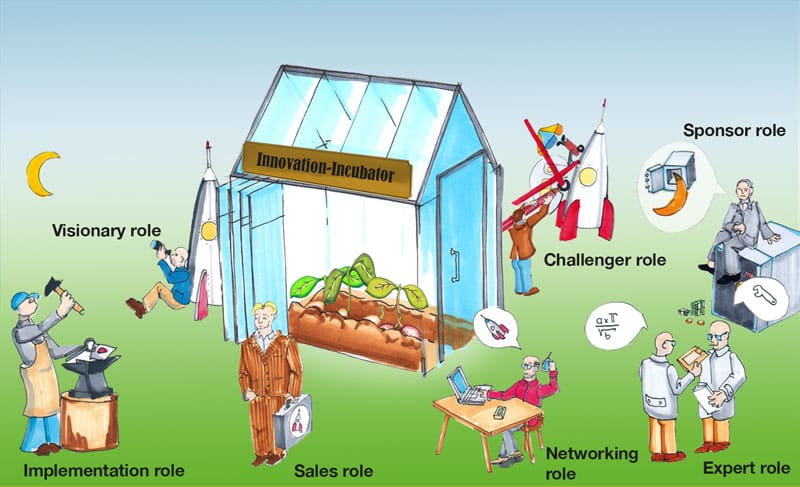
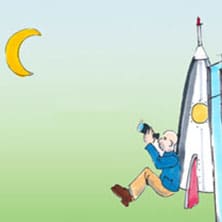
Visionary
Role 1 – The Visionary Role
These are the ones who identify and search for opportunities everywhere. The ones who don’t see obstacles, but new paths. The ones that instead of saying “let’s go the other way around” try to find solutions.
The creative visionaries can often be conceived as the dreamers, but the truth is they not only dream with innovation, they also land the ideas and design the innovation highways, so to speak.
Phrases like “we can’t do this” are a challenge for them. The ones with the visionary role are ready to change course all the time, whether that means trying a new technology or finding new ways to make the exiting one fit the brief.
But of course, their pros can also be cons. Visionaries tend to overthink and get attached to some ideas. It is the leader’s job to guide them, and sometimes, even request to stop searching for new ways and stick to the best result to that point.
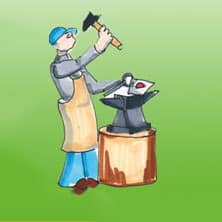
Implementation
Role 2 – The Implementation Role
But they offer their eyes and intellect to detect missing resources, possible mistakes. They are the ones that make sure that this new idea gets approved or discarded because they are the ones that test them, as quickly as possible.
This role depends a lot on a fast way of thinking and reaction time. Improvisation is allowed, but always keeping the project safe.
Doers are also very much in touch with external teams. If the innovation team needs sudden new technology, a team member, advice, or budget, doers are the ones making the connections, since they are the ones in touch with the new project’s execution.
Your job as a leader is to protect the doers’ adaptation and stability. Their role demands a lot of energy and thinking, so they get burned out a lot. Also, it is a good idea to remind them that speed is good, but also good results.

Networker
Role 3 – The Networking Role
To make the doers’ job easier, we need crosslinkers. The ones that know, almost literally, everybody inside and outside your company.
While visionaries and doers get their hands on the task, crosslinkers are ready to jump into action anytime. And since these three roles are in constant interaction, crosslinkers will know when they are needed before the help is requested.
For them to work faster, and so the project keeps going on good tracks, visionaries must communicate their ideas on time before doers start executing, so cross-linkers make the necessary contacts in forehand.
Anything from possible customers, partnerships, suppliers, designers, experts on particular fields, human resources, cross linkers got it covered.
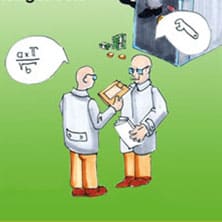
Expert
Role 4 – The Expert Role
Depending on the type of project you are running, you will need between one and two experts in the mentioned field. But always, at least, one innovation expert.
Their job is to process information as fast as they can, something only their expertise can give them.
It is impossible to find someone who knows absolutely everything about a topic, but what you need to look for is experts with a lot of experience on the field of your choosing.
Expertise and knowledge are a great combination for an innovation team, mostly because not only they know what they have to do, but what to do if something fails or how to avoid mistakes they have already experienced.
As you may be thinking, experts work very close to doers and constantly exchange insights. Which, of course, may cause some academic disputes. Here your job as team leader is to divide roles and prioritize results.
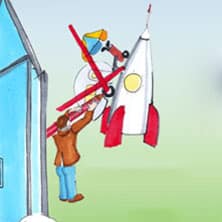
Challenger
Role 5 – The Challenger Role
Yes, you guess right. The critics are not the favorite team members, at least until they see something nobody else saw and saved the entire project just on time.
It is important for your team to have at least two critics, so one can be part of the project right from the beginning, and the other one, hand in hand with the expert, can see possible flaws.
Believe us when we tell you, you can have 100 experts on the team, but one critic may save you from critical damage. They are in charge of keeping ideas on the right track, despite all the changes.
The critics’ job is also making questions over and over again to discover weaknesses and to prove hypotheses. But in no way is meant to obstruct the project.
If a critic is about to stop part of the process, he or she must have a very strong and documented reason to do so.

Sales
Role 6 – The Sales Role
The only thing that may not be hard to sell is gold, and still, the ones who know how to sell faster and how to please customers, are the sellers.
Independently of what your innovation project is about, the outcome needs to be sold by someone who can translate whatever your innovation team has made to the directors of your company’s departments, and ultimately, to possible buyers.
Good sellers are those who fully understand the pros and cons of your project, and manage to make them appealing enough to the target of your interest.
But beware, their role is not about lying, it’s about highlighting the best part of the project and to sugarcoat the possible minor failures or disadvantages, if any.
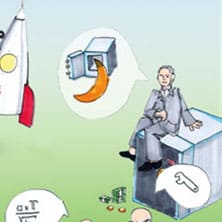
Sponsor
Role 7 – The Sponsor Role
Working very close to the sellers, but not necessarily at the same time, we have the sponsors.
You will notice that sellers do a great job, but in order to make this innovation project bigger and to have a higher reach, you will need sponsors.
They are the ones that open doors for making more sales, but also the ones that find other investors interested in what your innovation team has been doing.
Our recommendation is to bring sponsors to the table once the project has been tested several times, and when you can offer positive results of all the work done.
Bigger budgets open the doors for more projects, a bigger team if necessary, and make it easier to reach brand new technologies. So do not underestimate their power.
Other Considerations when Putting Together an Innovation Team
We have mentioned the 7 roles in an innovation that have proven successful results at Innolytics®. We should also mention that, despite we have these seven roles very clear, in order to strengthen the innovation capability of a company, every team needs to establish an innovation culture.
This means, while very single innovation team on earth must be flexible and disruptive, they should all also follow strategic thinking, practical innovation and constant communication with each other, and other external teams involved deeply or superficially.
This, however, does not mean that you should allow external teams to influence what your innovation team is doing unless they have a direct connection. The separation must also be present.
The secret is to have effective communication, rotation schemes, constant information sharing, and to innovate by example. Do not allow your team to work isolated.
To finish this post, we recommend you the final ideas:
- If you need to form an innovation team in a short time, request more time. We mean it. Finding the right people for the seven roles we mentioned takes time, and sometimes, many interviews from outside your current payroll.
- Do not start a project without clear objectives and milestones. But overall, make sure there is a culture of innovation in the company to make your team’s work easier.
- Sometimes less is better. If you only have seven people that fulfill the seven roles we talked about, then so be it. As long as the roles are present, the size of the team should not matter.
- Always keep on trying new approaches. Learn from the mistakes made, and never be scared of starting to establish an innovation team.